"Yes, Virginia, there is a Santa Claus" is a line from an editorial by Francis Pharcellus Church. Written in response to a letter by eight-year-old Virginia O'Hanlon asking whether Santa Claus was real, the editorial was first published in the New York newspaper The Sun on September 21, 1897.

Carlisle is a cathedral city in the ceremonial county of Cumbria in England. It is the administrative centre of Cumberland Council which covers an area similar to the historic county of Cumberland.

Cumbria is a ceremonial county in North West England. It borders the Scottish council areas of Dumfries and Galloway and Scottish Borders to the north, Northumberland and County Durham to the east, North Yorkshire to the south-east, Lancashire to the south, and the Irish Sea to the west. Its largest settlement is the city of Carlisle.
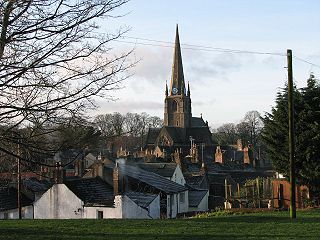
Cockermouth is a market town and civil parish in the Cumberland unitary authority area of Cumbria, England, so named because it is at the confluence of the River Cocker as it flows into the River Derwent. The mid-2010 census estimates state that Cockermouth has a population of 8,204, increasing to 8,761 at the 2011 Census.

Thomas Tickell was a minor English poet and man of letters.

Clement Clarke Moore was an American writer, scholar and real estate developer. He is best known as author of the Christmas poem "A Visit from St. Nicholas", which first named each of Santa Claus's reindeer.

HMS Cumberland was a Batch 3 Type 22 frigate of the British Royal Navy. She was launched in 1986 and commissioned on 10 June 1989. The frigate was on station during the First Gulf War and was part of the Devonport Flotilla based at Devonport Dockyard. Cumberland was decommissioned on 23 June 2011.
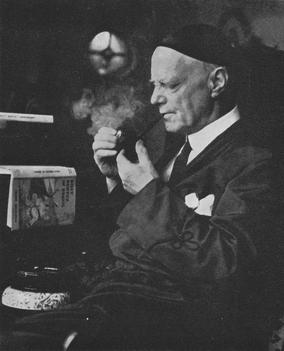
Charles Harold St. John Hamilton was an English writer, specialising in writing long-running series of stories for weekly magazines about recurrent casts of characters, his most frequent and famous genre being boys' public school stories, though he also wrote in other genres. He used a variety of pen-names, generally using a different name for each set of characters he wrote about, the most famous being Frank Richards for the Greyfriars School stories featuring Billy Bunter. Other important pen-names included Martin Clifford, Owen Conquest and Ralph Redway. He also wrote hundreds of stories under his real name such as the Ken King stories for The Modern Boy.

William George Bunter is a fictional schoolboy created by Charles Hamilton using the pen name Frank Richards. He features in stories set at Greyfriars School, a fictional English public school in Kent, originally published in the boys' weekly story paper The Magnet from 1908 to 1940. The character has appeared in novels, on television, in stage plays and in comic strips.
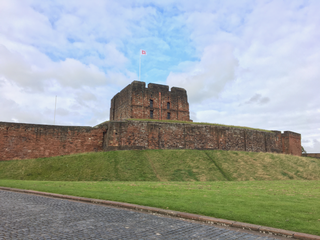
Carlisle Castle is a stone keep medieval fortress located in the city of Carlisle near the ruins of Hadrian's Wall. First built during the reign of William II in 1092 and rebuilt in stone under Henry I in 1122, the castle is over 930 years old and has been the scene of many episodes in British history.

Victor Ambrus was a Hungarian-born British illustrator of history, folk tales, and animal story books. He also became known from his appearances on the Channel 4 television archaeology series Time Team, on which he visualised how sites under excavation may have once looked. Ambrus was an Associate of the Royal College of Art and a Fellow of both the Royal Society of Arts and the Royal Society of Painters, Etchers and Engravers. He was also a patron of the Association of Archaeological Illustrators and Surveyors up until its merger with the Institute for Archaeologists in 2011.
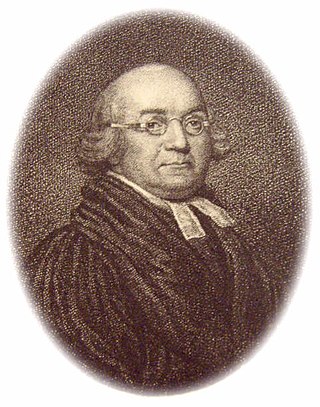
Rev. Jonathan Boucher FRSE, FSA was an English clergyman, teacher, preacher and philologist.
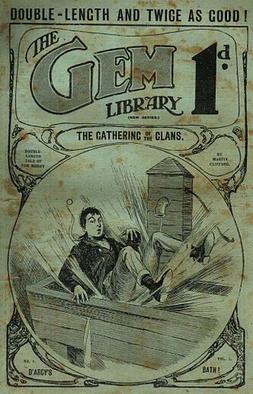
The Gem (1907–1939) was a story paper published in Great Britain by Amalgamated Press in the early 20th century, predominantly featuring the activities of boys at the fictional school St. Jim's. These stories were all written using the pen-name of "Martin Clifford," the majority by Charles Hamilton. Many issues also included a shorter serial story ; these parts of the paper were not written by Charles Hamilton.
Mary Cadogan was an English author. She wrote extensively on popular and children's fiction including biographies of the creators of William Brown and Billy Bunter.
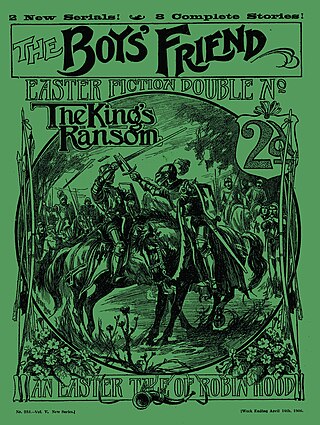
The Boys' Friend was a British story paper of the early 20th century, published by Amalgamated Press from 1895 to 1927.

Billy Bunter of Greyfriars School is a BBC Television show broadcast from 1952 to 1961. It was based on the Greyfriars School stories, written by author Charles Hamilton under the pen name Frank Richards. Hamilton wrote all of the scripts for the television show.
Stephen Nissenbaum, is an American scholar, a Professor Emeritus of the University of Massachusetts at Amherst's History Department specializing in early American history through to the nineteenth century. Most notably, he co-authored a book with Paul Boyer in 1974 about the Salem witch trials, Salem Possessed: The Social Origins of Witchcraft, called "a landmark in early American studies" by John Putnam Demos.

Billy Bunter's Barring-Out is a school story by Charles Hamilton writing as Frank Richards, using the characters and settings of the Greyfriars School stories published from 1908 to 1940 in The Magnet. The book's retail price was 7s 6d.
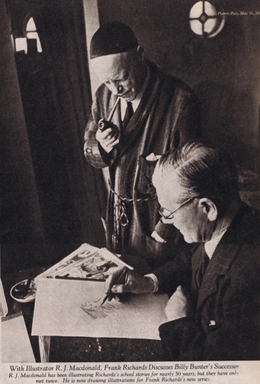
Reginald James Macdonald, who signed his work as R. J. Macdonald, was a Scottish illustrator and cartoonist best known for his work in the boys' school stories in The Gem written by Charles Hamilton writing as Martin Clifford. After World War II from 1947 to his death in 1954 he provided colour and black and white illustrations for the Billy Bunter novels by the same author.
















